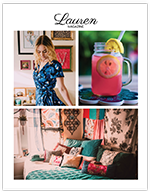
My wardrobe is so extensive that I had to create a second closet in my tiny apartment just to store it all. It’s also constantly growing. When my friends notice my ever-evolving assortment of clothing, this usually leads to inquiries.
Where did you get that? How come it always seems like you’re wearing new clothes? How is it possible that you aren’t completely broke?
The truth is, about 90% of my wardrobe is secondhand. If it weren’t, I’d be living on the streets with the amount of time I spend shopping. Thrift stores are a great way to get more bang for your buck, but many people find them overwhelming or exhausting.
Since I spend so much time in them, I’ve become a expert of sorts. A thrift-store connoisseur*. I’ve have learned some great tricks and shortcuts that make shopping at thrift-stores quicker, easier, and more productive. With these tricks, you’ll be able to compose your own expansive and high-quality wardrobe without breaking your bank account.
*Full disclosure: I just had to ask Google how to spell this word. I’m not that fancy.
I know where all of the thrift stores are near me, and when I’m on the hunt for a specific wardrobe item I’ll hit them up at least once a week. I enjoy shopping (even window shopping) so this isn’t a chore for me. There are two huge thrift stores near my house, and they happen to be on my way to work and church respectively, so I stop in when I’m already passing by.
The price points at an upscale thrift store tend to be higher, but there are benefits. First, the selection is curated, so you won’t be digging through garbage to find the hidden gems. Second, in most cases the clothing you’re searching through is higher quality.
Maybe you’ll spend $30 on a dress instead of $8, but that dress is gently used and well-made. If you spent $30 on a new dress, the quality would be significantly reduced. It’s the same principle as buying a used car. The value of a new car depreciates the moment you drive it off the lot. You save money and gain utility when you buy a gently used car instead of a brand new one. It’s exactly the same with clothing.
It might take some extra effort, but a huge mess in a store should excite you. While upscale thrift stores and consignment shops are usually more organized, you pay a premium for that organization. The more you have to dig through clothing, the more likely you are to find that hidden gem for dirt cheap.
Used clothing is far more likely to have damage than new clothing (DUH!). And generally, you can’t return thrifted purchases. So inspect each garment carefully before you buy, keeping an eye out for moth holes, stains, and popped seams. Some damage is fixable, but you’ll have to determine whether the extra effort is worth your time.
There are two reasons for this. First, people often will pick something up and put it back somewhere else, so you never know what misplaced items you’ll find. But second (and perhaps most important): vintage clothing often has totally different sizing than modern clothing. For example, I’m typically a size 4 (or size small) in something like a wrap skirt, but recently, while browsing through the extra large section, I found a misplaced vintage size 8 animal print skirt that fit me perfectly. So go to the store with lots of energy, because you really should be looking through everything.
I know exactly which cuts work on me and which don’t, plus I can eyeball my size for most types of clothing (except pants and fitted dresses or pencil skirts), so sometimes I don’t even have to try things on. This can really speed up the process. When something fits you right, pay attention to what it looks like on the hanger so you can learn to eyeball it. I still recommend trying clothing on when you can, but avoiding clothes that definitely won’t fit really saves time in the fitting room.
I am a size 4 in Gap and Levi’s jeggings, a size 6 in H&M jeggings. If a dress from H&M is fitted, I’m a size 6 or 8, but I’m a size 4 if it’s fitted around the waist and has a flow-y skirt. Knowing this information can make shopping second hand much easier. When I buy jeans, I just scan the racks for the sizes and brands that I already know fit me, and I grab those. If a skirt or dress is from a brand where I’m already familiar with the sizes, I am able to avoid clothing that doesn’t fit.
Clothes that fit always look more expensive. The money you save by buying secondhand often makes up for the cost of tailoring. It’s a win-win!
What are your favorite thrifting secrets? Share them in the comments below!

